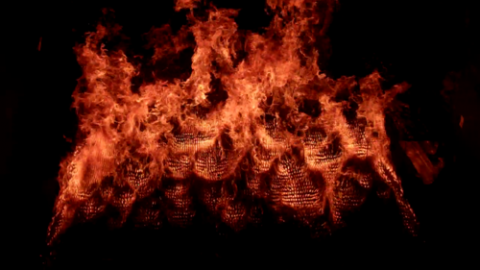Understanding the Physics of Fire Spread
To better understand how wildland fire spreads under various conditions, the National Fire Decision Support Center, a collaborative effort between U.S. Forest Service, Fire and Aviation Management and Research and Development, has supported ongoing research at the Missoula Fire Sciences Laboratory. The research team, including FFS researchers Mark Finney, Sara McAllister, Jack Cohen, Jason Forthofer, Bret Butler, and Matt Jolly, as well as Bob Yokelson (University of Montana), David Lignell (Brigham Young University), and Kozo Saito and Nelson Akafuah (University of Kentucky), have found that the radiant intensities in wildland fires are not sufficient to ignite fine fuel particles such as needles and grasses. Rather, intermittent flame convection provides the critical heating needed to ignite these particles.
Experiments to date have demonstrated that the intermittency of flame contact is due to flow instability in the hot gases resulting in a predictable pulsation frequency related to the dimension of the fire. Because the physical processes of ignition by convective heating may be different than by radiative heating, ignition experiments are also being performed using a unique hot air torch capable of heating air to flame temperatures. The research team also has discovered that the ignition of wood depends on a critical rate of converting solid mass to combustible gas similar to other substances, such as plastic, and that ignition depends on heat flux and wind flow, providing an improved definition of ignition and flammability limits. Recent experiments also demonstrate that this critical rate is also a function of the moisture content of the fuel.
This research suggests a completely new approach to understanding and modeling fire spread that is based on an experimentally supported theory, creating new opportunities for developing models that can be used for wildland fire management applications.
